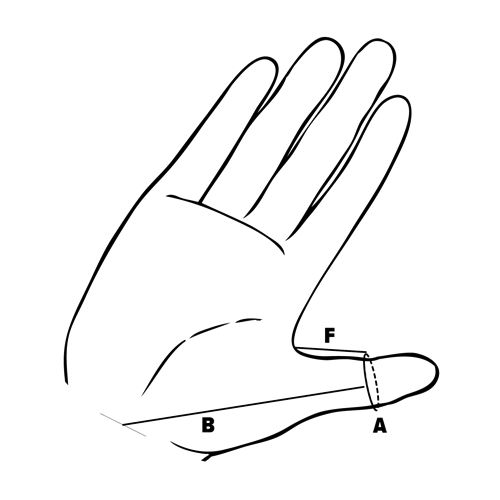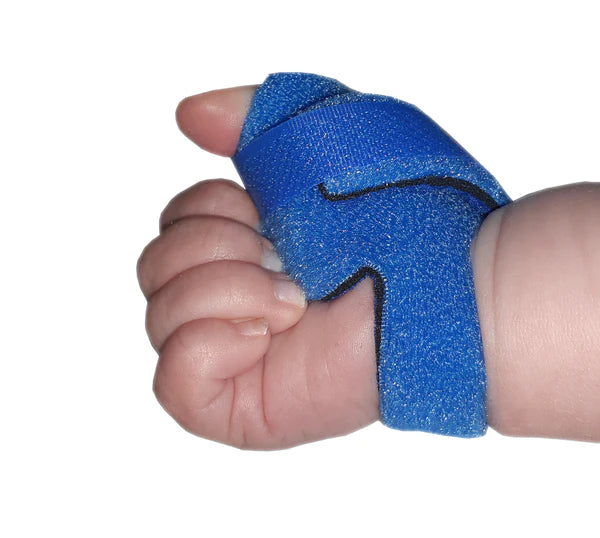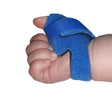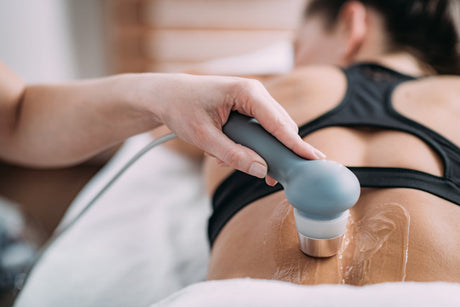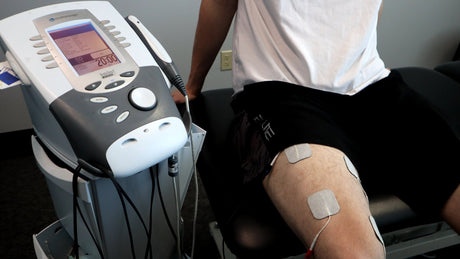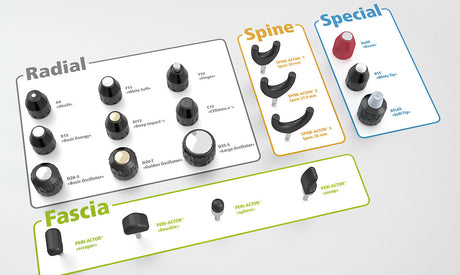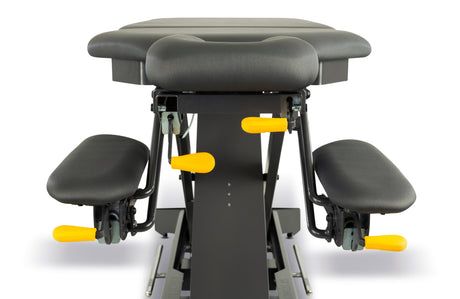
Mckie Neonatal Thumb Splint
Mckie Neonatal Thumb Splint - N1 / Left is backordered and will ship as soon as it is back in stock.
Shipping Information
Shipping Information
Product Information
Sizing
Documents / Videos
Reviews
McKie Thumb Splint Neonatal Sizes (NICU Premature Infant Sizes)
- Thumb abduction and opposition splint
- Sized to fit premature infants or infants who are very tiny (3 sizes).
- Streamlined design dynamically assists grasp.
- Minimal palmar coverage allows the hand to function more normally, to feel and to manipulate objects.
- Made from 1.5 mm thick, washable, nylon-covered neoprene.
- Latex free
- Extra hook tape is available for purchase. VELCRO® brand tape as well as other brands of hook tape are used in the manufacture of the McKie Thumb Splint.
- Infant Thumb Splint
How It Works
Neurological/ Developmental Deficits
- The thumb is drawn into opposition. The splint pulls in the same direction as muscle attached to the thumb.
- Because active, opposed grasp is supported, the potential for acquisition of abnormal, compensatory grasp patterns is diminished.
- The neoprene is only 1.5mm and coverage of the palm is minimal, thus adequate space is left in the hand to manipulate and explore objects.
- Normal hand use and development is thus not thwarted by the splint itself.
- For weakness and hypermobility at the M-P joint, strap placement at the head of the metacarpal will block hyperextension.
Arthritis/Injury
- The splint provides light compression.
- It cushions the thenar eminence and reduces joint play.
- At the C-M-C joint, the splint strap can be attached to provide lift to the thumb metacarpal and increase joint space.
- For weakness and hypermobility at the M-P joint, strap placement at the head of the metacarpal will block hyperextension.
Instructions
Applying Thumb Splint

Step 1: Put the thumb through the thumb hole. Orient the splint so that the stitching follows the crest of the web between thumb and index finger. Snug to fit comfortably. Draw the strap of the splint at an angle so that it drops below the corner of the palm. (For medical personnel, it sits below the pisiform bone). Pull the split strap so it continues around the back of the hand all the way around again to the palm side.
Step 2: Depending on your intent, you can attach the hook tape in either of 2 ways:
Option A: If you are experiencing thumb pain or arthritis at the base of the thumb (C-M-C joint), direct the pull of the strap up into the base of the thumb metacarpal as illustrated.
Option B: If you are attempting to improve grasp quality, attach the hook tape to put mild pressure on the head of the thumb metacarpal.
